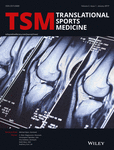Despite increased physical activity levels, bone mineral density decreases after total hip arthroplasty
Abstract
The aim of this study was to evaluate if total hip arthroplasty (THA) could have a negative effect on bone health. Forty-two patients scheduled for THA due to osteoarthritis/rheumatoid arthritis were followed for 5 years. Bone mineral density (BMD) was measured using dual X-ray absorptiometry in both calcanei, hips and the lumbar spine before surgery and after 6, 18 months, 3, and 5 years. Quality of life was measured using EQ-5D, and activity was measured using the Tegner activity level. A total of 22 females and 20 males were included in the study. The females lost 10%-12% BMD and the males 8%-9.3% BMD in their calcanei (P = 0.002 and P = 0.003, respectively). No significant loss was seen in the contralateral hip, whereas a slight yet significant increase in BMD was seen in the lumbar spine in men. The activity level and quality of life increased significantly from 6 months (P = 0.002 and P = 0.001, respectively) and were maintained during the study period. Despite post-operative improvements in physical activity and quality of life, a significant loss of BMD was found in the calcanei three and 5 years after THA.
CONFLICT OF INTEREST
J. Kartus has received grants from Western Sweden County Council. J. Kartus has received personal fees for Lecturing for Linvatec Sweden.




